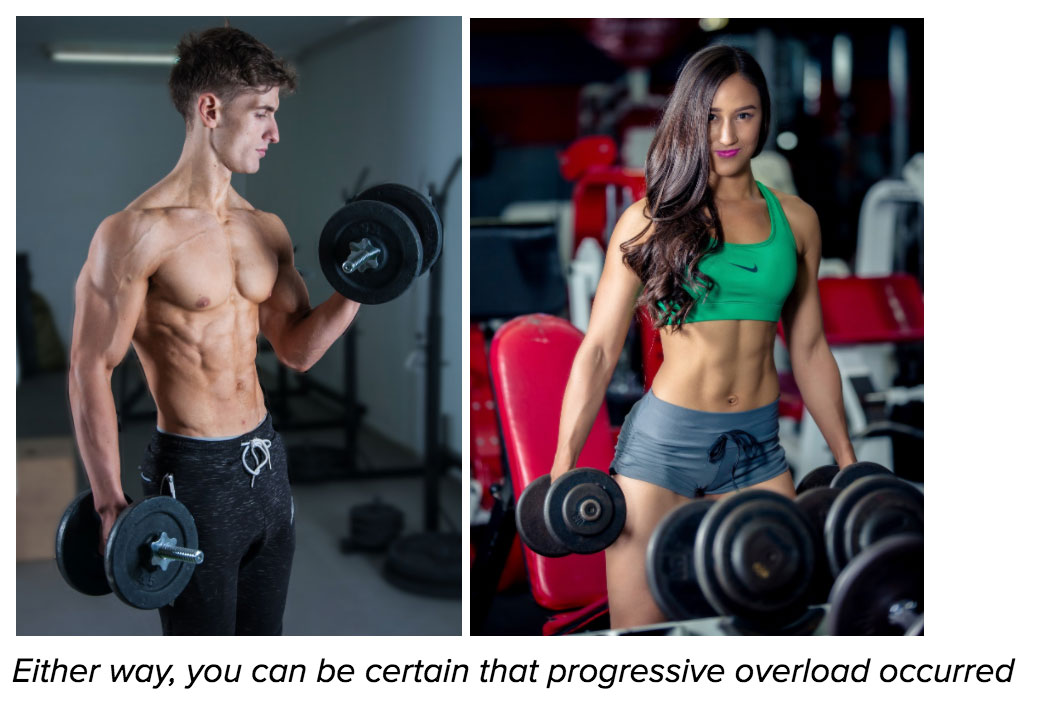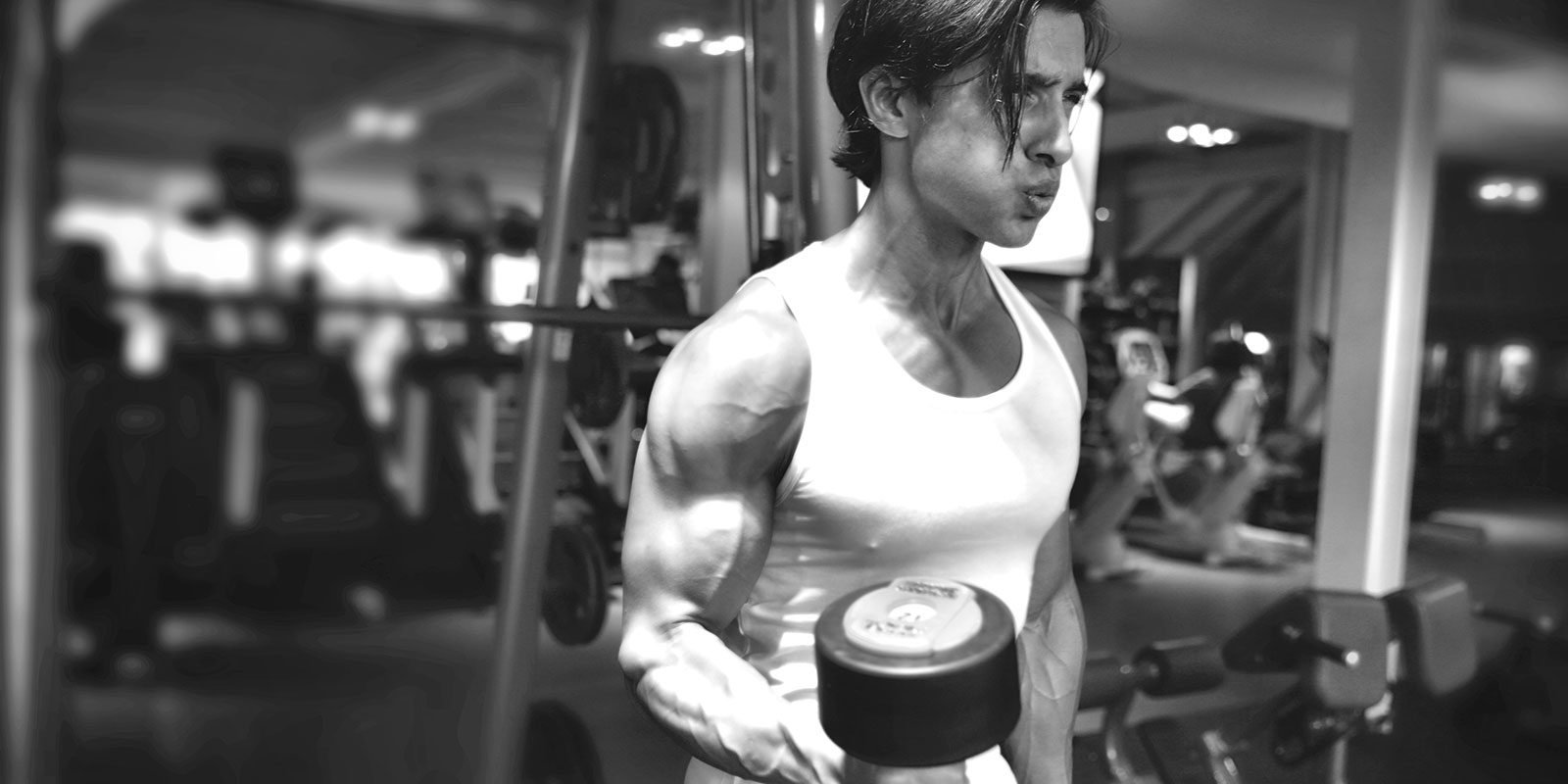Have you ever wondered why despite training in the gym 3 times per week consistently for 5 years, nothing ever changes? You switch up your program every few weeks, follow the routine, but there is no progress.
It’s quite likely that you may have overlooked the single most important factor in getting positive results from your training – progressive overload.
You can have the perfect training program, with all parameters optimised for obtaining your goals, but without a system for progressive overload, that amazing plan will not bear the fruits of your labour.
The #1 Tool For Increasing Muscle and Strength
Pick a popular adjective to describe your goal: get lean, toned, slim, ripped, shredded, built….in reality, there are only two variables to be manipulated: body fat and muscle mass. Body fat will have a lot to do with your diet (as discussed here). The muscle mass component is where progressive overload comes in.
You see, the body doesn’t care what your training goals are. It cares about one thing – survival. Survival occurs because of adaptation. The reason human beings have survived millennia and now dominate the planet is that we adapted to our environment.
So with your training, you want to apply a sufficient amount of stress on the muscle to force your body to adapt. That stress will stimulate your body to protect itself by making itself bigger and stronger. With this newfound adaptation, the stress on your body required for further muscle adaptation increases.
Repeating the same stress again will have limited impact. In order for your training program to keep your muscles growing, strength increasing, or athletic performance improving (1,2), it needs to now impose a greater level of training stress. By doing this, you are showing your body that these positive adaptations are needed for its survival. This crucial aspect of an effective training program is called progressive overload.

6 Methods to Use Progressive Overload to Get Stronger and Add More Muscle
Hopefully, you now understand that performing the same exercises with the same weight and the same number of repetitions for years on end will achieve very little in terms of promoting more muscle, strength or fat loss.
As for how to implement progressive overload, here are 6 methods:
1.Perform more sets
-
- Simple enough. If you were doing 2 sets, you could increase to 3
- Note: a set is a group of consecutive repetitions
2.Increase training ‘density’
-
- This means performing the same training work in a shorter amount of time
- As an example, you might decrease rest periods between sets from 2 minutes to 90 seconds, while trying to get the same number of repetitions with the same load
3.Increase time under tension
-
- By performing repetitions more slowly, the logic is that training stress is increased
- Instead of a 1 second count on both the contracting and lengthening phases of an exercise, you could increase the lengthening phase to 2 seconds
4.Increase training frequency
-
- Training a muscle group more times per week certainly increases training stress
- Instead of hitting separate muscle groups on different days, you could combine muscle groups within each session and repeat these sessions more often
5.Perform more repetitions
-
- More repetitions with a given weight is a time-proven method of progressive overload
6.Increasing weight
-
- This is a highly efficient form of progressive overload
- Once you can comfortably hit a target number of repetitions on an exercise, increase the weight slightly
Each of these methods has its pros and cons, and the purpose of this article is not to go into a detailed analysis. I will instead give you a practical application.
How To Simply and Effectively Implement Progressive Overload
A highly effective way to implement progressive overload is by using methods 5 and 6 above: manipulating repetitions and the amount of weight lifted.
To start with, take note of the current weight you are lifting on a given movement, and how many repetitions you are able to achieve. It could be 30kg for 8 repetitions, for example.
Then set yourself a maximum repetition target, say 10 repetitions. The next time you train that movement, try to get closer to that 10 repetition target. You may get 9 repetitions in the next workout and then hit 10 in the following one.
Now that you’ve hit your repetition target, take the weight up slightly in the following session, and repeat the process. You are now implementing progressive overload.
Warning! Never attempt progressive overload to the detriment of form and technique. In fact, lifting the same load and repetitions but with better form and control is in itself a form of progressive overload.
An added bonus of using this method is that it helps you over-ride one important limitation – humans are always striving to be efficient – it’s an evolutionary survival mechanism to help save calories. Just as important as the physical need for progressive overload is the psychological requirement for a system which makes you train beyond your comfort zone. Without specific training program goals that demand high exertion, you will most likely not train with maximal effort (3,4)
Takeaway: Try increasing the load lifted on an exercise this week. Take note of the weight you are using and the repetitions achieved, and aim for the same number of repetitions with a higher weight in the following session. Force your body to adapt!
About the author
Cymron Bancil
After years juggling a senior banking career with my passion for fitness, I left finance to help busy professionals transform their bodies inside and out. As an online coach, I use a science-based approach to get you the lean, healthy physique you deserve.
Get my top research-led and results proven tips delivered right to your inbox via my free newsletter HERE.
References
- Peterson, M. D., Pistilli, E., Haff, G. G., Hoffman, E. P., & Gordon, P. M. (2011). Progression of volume load and muscular adaptation during resistance exercise. European Journal of Applied Physiology, 111(6), 1063–1071.
- Straub, W. F. (1968). Effect of overload training procedures upon velocity and accuracy of the overarm throw. Research Quarterly of the American Association for Health, Physical Education and Recreation
- Cotter, J. A., Garver, M. J., Dinyer, T. K., Fairman, C. M., & Focht, B. C. (2017). Ratings of Perceived Exertion During Acute Resistance Exercise Performed at Imposed and Self-Selected Loads in Recreationally Trained Women. Journal of Strength and Conditioning Research, 31(8), 2313–2318.
- Elsangedy H, Machado D, K. K. et al. (2018). Let the Pleasure Guide Your Resistance Training Intensity. Medicine & Science in Sports & Exercise, 50(7), 1472–1479.


